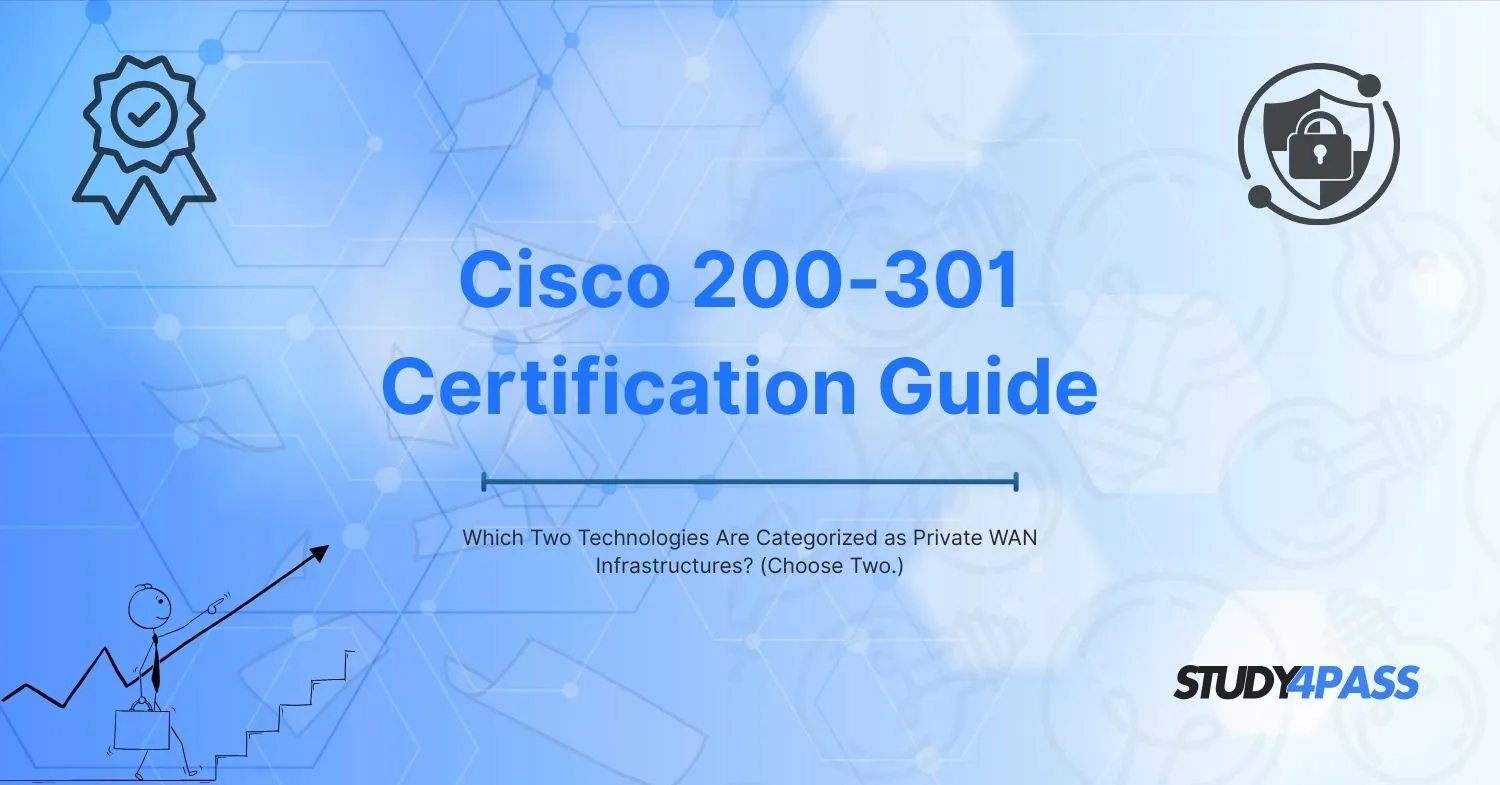Introduction To Cisco 200-301 Official Cert Guide
A Wide Area Network (WAN) connects geographically dispersed networks, enabling businesses to link offices across cities or countries. Unlike Local Area Networks (LANs), WANs rely on service providers and various transmission technologies.
WAN infrastructures can be categorized as:
- Public WANs (Internet-based, less secure, e.g., VPN over Internet)
- Private WANs (Dedicated connections, more secure, e.g., MPLS, Leased Lines)
- For the Cisco 200-301 exam, knowing the difference is essential.
- Public vs. Private WAN Infrastructures
Public WANs
- Use shared infrastructure (Internet)
- Less expensive but less secure
- Examples: Broadband, 4G/5G, Public VPNs
Private WANs
- Use dedicated connections
- More secure and reliable
- Higher cost but better performance
- Examples: MPLS, Leased Lines
- The Cisco 200-301 Official Cert Guide emphasizes private WANs for enterprise-grade reliability.
Two Key Private WAN Technologies
The two main private WAN technologies are:
- A. MPLS (Multiprotocol Label Switching)
- Uses labels to route traffic efficiently
- Provides Quality of Service (QoS) for critical applications
- Used by enterprises for secure inter-office connectivity
Why MPLS is Private:
- Traffic does not traverse the public Internet
- Service providers offer dedicated paths
Leased Lines (T1/E1, T3/E3, etc.)
- Point-to-point dedicated connections
- Fixed bandwidth with guaranteed uptime
- Common in enterprises requiring stable connectivity
Why Leased Lines are Private:
- No sharing with other customers
- Secure and predictable performance
These technologies are heavily covered in the Cisco 200-301 Official Cert Guide as core private WAN solutions.
Why These Technologies Are Considered Private
- No Public Internet Exposure: Traffic stays within the provider’s network.
- Dedicated Bandwidth: No contention with other users.
- Higher Security: Reduced risk of eavesdropping.
The Cisco 200-301 exam tests your ability to distinguish these from public alternatives.
|
Feature |
MPLS / Leased Lines (Private) |
Internet VPN (Public) |
|
Security |
High (Dedicated paths) |
Lower (Encryption-dependent) |
|
Reliability |
Guaranteed SLAs |
Best-effort delivery |
|
Cost |
Higher |
Lower |
|
Performance |
Consistent |
Variable |
Understanding this comparison is vital for the Cisco 200-301 exam.
How Study4Pass Helps You, Master Cisco, 200-301 Concepts
At Study4Pass, we provide:
- Detailed Exam Guides (Aligned with Cisco 200-301 Official Cert Guide)
- Practice Questions (Including WAN technology comparisons)
- Hands-on Labs (For real-world understanding)
Our resources ensure you grasp private vs. public WAN infrastructures effectively.
Conclusion
MPLS (Multiprotocol Label Switching) . These technologies offer dedicated, secure, and reliable connectivity, making them ideal for enterprises. For more in-depth Cisco Certification CCNA (200-301) preparation, refer to the "Cisco 200-301 Official Cert Guide" and leverage Study4Pass for expert training materials.
Special Discount: Offer Valid For Limited Time “200-301 Exam Prep Practice Tests”
Sample Questions for Cisco 200-301 Exam Prep Practice Tests
Actual exam question from Cisco's 200-301 Exam
Which command is used to verify the status of VLANs and the ports assigned to them on a Cisco switch?
A) show vlan
B) show ip interface brief
C) show running-config
D) show cdp neighbors


